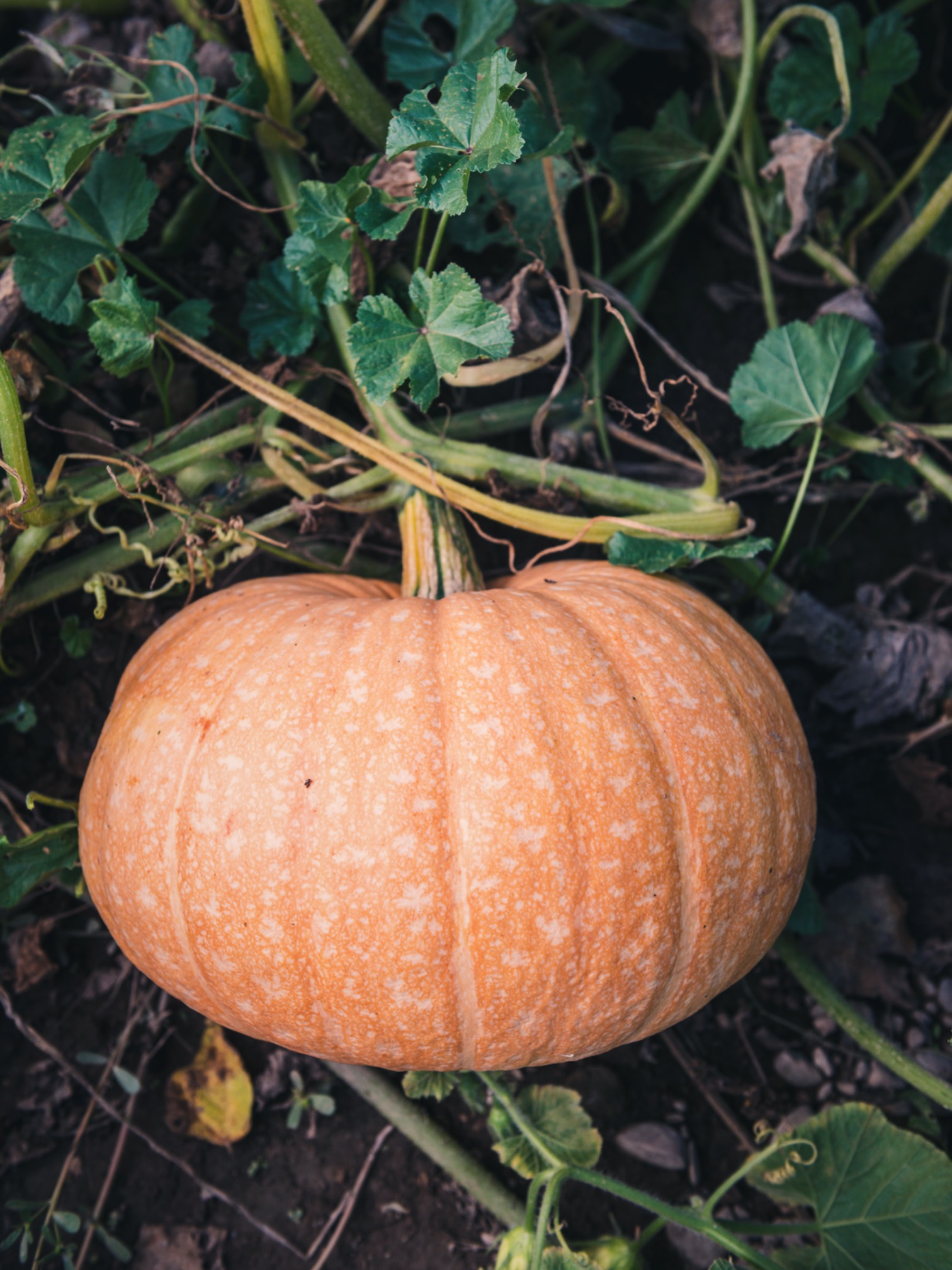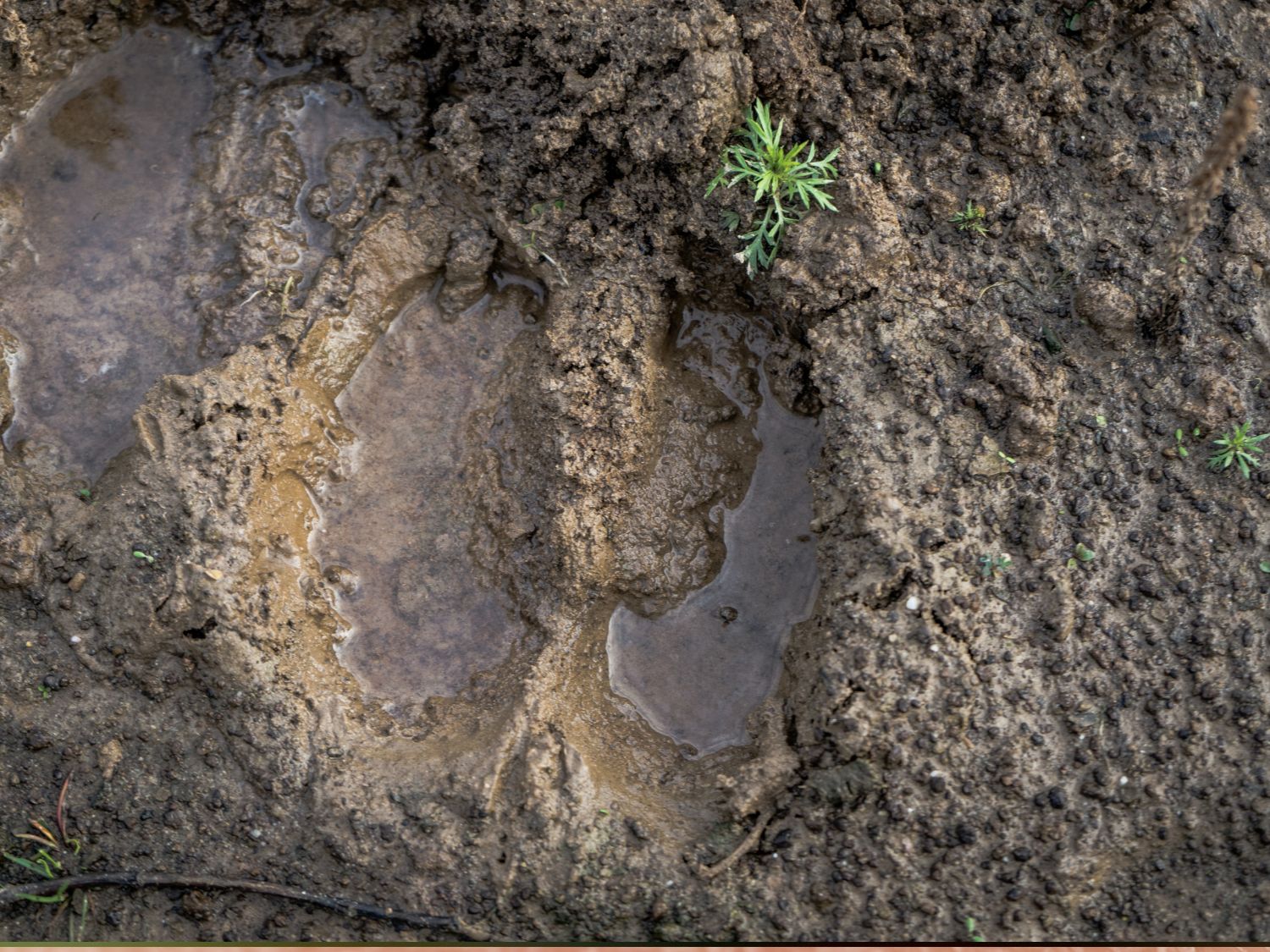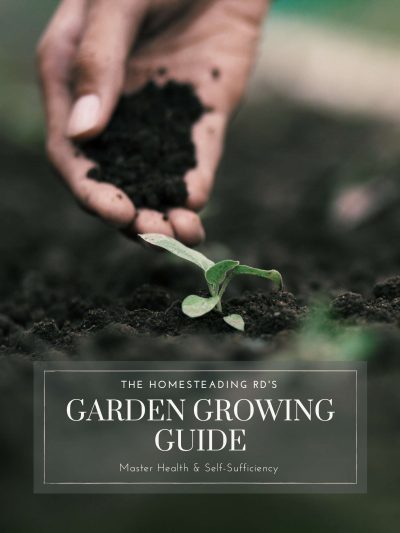With your beautiful pumpkins ripening, you might be wondering “Do deer eat pumpkins? Are my pumpkins safe from them?” Then, you’re in the right place!
Few things are as disheartening as dedicating months to caring for your cherished pumpkin plants, only to have them ravaged by hungry deer right before you can reap the rewards. How frustrating!
In this blog post, we’re going to plunge into the truth behind whether pumpkins hold any appeal in a deer’s diet. I’ll also be sharing invaluable insights to aid you in protecting your precious pumpkins from these elegant, yet insatiable herbivores.
Let’s dive in!
*Disclosure: This post may contain affiliate links to products (including Amazon). I’ll earn a small commission if you make a purchase through my link, at no additional cost to you! Regardless, I only link to products that I personally use on our homestead or believe in.
Do Deer Eat Pumpkins?
The short answer is yes, deer certainly can (and will) eat your pumpkins! They absolutely love them. While tomatoes aren’t necessarily their first pick, pumpkins are high on their list!
*You’ll definitely want to install some protection strategies around your garden to save your pumpkins (and other plants). Keep reading to find out what those key strategies are!
Pumpkin Leaves
Early in the season, deer will enjoy munching on the tender, young pumpkin leaves. They are a bit spiky, but the deer don’t seem to mind. However, once there are flowers and pumpkins present, they’ll focus on those instead.
Pumpkin Flowers
If you’ve never tried eating pumpkin flowers, don’t miss out! They are delicious not only to deer, but to humans as well! They have a sweet, yet earthy flavor with a touch of that wonderful pumpkin flavor. Yum! However, don’t take too many, as the flowers are needed to produce fruit.
Pumpkin Fruit
Deer absolutely love the tasty flesh (and seeds) of a pumpkin. If one is broken open, they will devour it quickly. However, deer may not take the extra effort to break the pumpkins open themselves if there are other tastier options available. It all depends on how hungry they are!
How to Tell if Deer Are Eating Your Pumpkins
Deer are one of the biggest animals that will feast in your garden, so their impact is easy to identify!
Here’s what to look for:
- Large, rough bite marks, rather than sharp nibbles (they only have incisors on their lower jaw)
- Uprooted plants as they pull and tear
- Trampled plants
- Hoof prints in the garden
- Deer scat nearby (small brown pellets)
Is It Okay to Feed Pumpkins to Deer?
While it might be tempting to leave some pumpkins out to feed the deer, it’s not the best idea. Creating a feed site results in unnaturally high densities of deer, which can spread disease, draw in predators, and cause deer to lose their natural foraging abilities.
The best way that you can help deer is to preserve their natural habitat and feeding grounds. They enjoy nut-producing trees, and areas with young hardwood and/or mature softwood trees.
What Other Plants Do Deer Eat?
Deer are natural herbivores and graze on a variety of crops, trees, grasses, vegetation, acorns, and nuts. They spend much of their day munching on whatever they can find, which can be up to 12 lbs of food per day!
Here are some of their favorites:
- Acorns
- Aspen
- Berry bushes
- Corn
- Goldenrod
- Honeysuckle
- Maple
- Poplar
- Sumac
- …just to name a few!
6 Tips to Keep Deer From Eating Your Pumpkins
Deer are common predators when it comes to your garden produce, so let’s chat about some strategies to keep them from eating your pumpkins, tomatoes, and everything else!
#1: Fencing
A solid fencing set of fencing is a must-have item, in my opinion! It not only helps to keep the deer out, but it will keep rabbits, digging neighborhood dogs, and raccoons out as well. Fencing also provides some level of privacy, which is always appreciated.
Permanent Fencing
This is the most traditional type of fencing and what often comes first to mind. It’s nice in that you only have to install it once, however, it has some drawbacks. The materials can be expensive and labor-intensive to install. In addition, there’s little flexibility to expand your garden in later years.
Temporary Fencing
Electric poultry netting is my favorite kind of fencing and is what I personally use! It works like a dream. It’s easy to set up and take down, packs down neatly, and it’s SUPER effective at keeping all of the critters out.
I also love that I can change the shape of the fencing each spring as I inevitably expand the garden. You can even run it with solar power if you don’t have access to a power source!
*While deer can easily jump a 4-foot fence, they typically won’t do it. I’ve been using this electric fencing for 8+ years now and have never had an issue with deer (or other critters) getting in. We have A LOT of deer around, too!
The Homesteading RD's Product Picks | |
Installs in approximately 15 minutes and is easy to create whatever unique shape you need! Effectively repels deer, racoons, rabbits, you name it! This unit will certainly keep your garden safe. | |
I use this unit to power the electric poultry netting and it works very well! It sends out electric pulses and is strong enough to power 25 miles of fencing! | |
#2: Predator Eyes
Deer are certainly prey to large predators like coyotes, cougars, bobcats, wolves, and bears. You can take advantage of this by scaring them away with some glowing predator eyes. I attach them to my chicken tractor as well!
The Homesteading RD's Product Picks | |
This is THE best deterrent light on the market. It is a bit more expensive, but you only need one with the 360 degree radius coverage from 9 LED bulbs that reach up to 1 mile away. It also has a random flashing pattern, making it exceptionally effective. Waterproof, powered by a 6V battery and automatically turns on at night. | |
If you are looking for an inexpensive & simple option, these solar-powered lights are excellent! Sold in packs of 2 and 4 (you will need more than 1 since these lights are directional). They store up power during the day, then start flashing at night. | |
#3: Motion-Activated Sprinkler
Using a motion-activated sprinkler is a great way to spook deer (or any other critters) out of your prized garden! Simply adjust the sprinkler head detector to face the oncoming traffic and it’ll pick up a 1600-square-foot area! Super neat!
The Homesteading RD's Product Picks | |
There are a few of these on the market that are cheaper, but don't waste your money! This is the most reliable one out there with day AND night settings, plus 1600 sq feet of coverage. | |
#4: Companion Planting
Adding certain plants around your pumpkin plants that deer dislike is another great strategy to keep them out! Deer aren’t super picky, but there are a few things that they can’t stand. Read more about companion planting in my article 5 BEST Pumpkin Companion Plants (and 3 to AVOID!).
Plants that deter deer:
- Toxic plants: Daffodils, foxglove, monkshood, poppies
- Highly fragrant plants: Sage, mint, garlic, salvia, lavender, peonies, bearded irises
- Fuzzy or thorny plants: Roses, lamb’s ear, spirea
#5: Deer-Repellent Sprays
Speaking of highly fragrant plants, we can utilize that to our advantage in a potent spray! This deer-repellent spray features mint oil and garlic oil (chemical-free!). A bonus feature is that it’s oil-based so it won’t wash away every time it rains, either.
The Homesteading RD's Product Picks | |
Deer Out is effective at repelling deer while being environmentally friendly using only natural ingredients. Safe for use around children and pets. 100% money-back guarantee! | |
#6: Ultrasonic Deer Repellents
While humans can’t hear ultrasonic sounds, deer sure can… and they can’t stand it! You can utilize ultrasonic pest repellers that kick on anytime something enters the vicinity. They’ll turn around and head in the other direction in no time!
The Homesteading RD's Product Picks | |
This effective device helps you to get rid of unwelcome animal visitors! It contains a motion detector system that detects movements and emits powerful ultrasonic sound white a flashing LED light. | |
Other Gardening Articles You’ll Love:
- Do Deer Eat Tomatoes? 6 Tips to Keep Them Away!
- 5 Best Pumpkin Companion Plants (and 3 to AVOID!)
- 5 Best Eggplant Companion Plants (and 3 to AVOID!)
- 5 Best Asparagus Companion Plants (and 3 to AVOID!)
Final Thoughts
While pumpkins are not a native food to deer, they will feast on them given the opportunity, especially if other food sources are limited. Understanding the nuances of deer behavior and preferences will help you better protect your garden plants.
Striking a balance between coexisting with wildlife and safeguarding your harvest is key. By implementing strategic measures such as fencing and deterrents, you can ensure that your pumpkin patch remains a place of vibrant growth and beauty, undisturbed by the occasional curiosity of passing deer.
*Are you interested in starting a garden, but you’re overwhelmed with where to start? Or maybe you’ve tried a garden in the past, but it flopped? Definitely check out my course How to Plan a Garden: Step-By-Step! Don’t forget my discount code “GARDEN” for 10% off!
*Information in this article was referenced from personal experience and/or from my favorite gardening book: The Vegetable Gardener’s Bible, unless otherwise noted.
The Homesteading RD's Product Picks: | |
This is THE gardening book to have! I've had my copy for over 10 years and it's the one that I keep going back to time after time. It provides design ideas for raised beds, compost bins, you name it! Plus helpful tables for pH ranges, companion plants and more. | |













